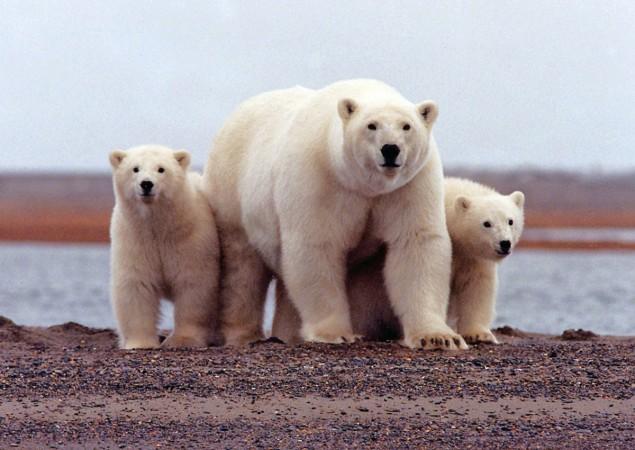
Polar bears — found in the frozen wilds of the Arctic, Alaska, Greenland, Canada, Russia and Norway — are the biggest land-based carnivores on the planet. They spend most of their lives around water and ice.
Unfortunately, these creatures have been classified as 'vulnerable' because they are particularly at risk from global warming that is causing temperatures in the Arctic to rise due to which the sea ice is melting earlier and forming later every year. This means that the polar bears have less time to hunt for food.
The International Union for the Conservation of Nature has put the estimate of the worldwide polar bear population at 28,500.
On the occasion of International Polar Bear Day, which is celebrated every year on February 27, let's take a look at the top 10 facts about polar bears that we may not know.
Top 10 facts about polar bears:
The known usage of the term 'polar bear' was as early as 1781 before which it was called the 'white bear'. 'Thalarctos Maritimus' is the scientific name for polar bear. It comes from the Greek words 'Thalassa' — meaning 'sea' — and 'Arktos' — meaning 'bear'. The word 'Thalassarctine' means 'of pertaining to the polar bear.'
Polar bears can run at 25 miles an hour and jump over six feet in the air. Adult polar bears are usually over 2.5 metre long and can weigh around 680 kgs. They are known as the biggest carnivores on the planet due to their huge size and weight. They also have 42 teeth.
Surprisingly enough, the fur of a polar bear is not white! The fur is, in reality, transparent with a hollow core that reflects light, which helps them blend in with their surrounding and also works as a trick when hunting seals. They also have a layer of fat called blubber that protects their bodies from frosty air and freezing water. The skin of a polar bear, beneath the white coats, is actually black. It helps them soak in the rays of the sun and keeps them warm thereby helping them adapt to survive in the harshest environment on the planet.
The first polar bear arrived in Britain in the 13th century in the form of a gift to Henry III from King Haakon IV of Norway. King Henry kept it at the Tower of London and allowed it to swim at the end of a rope in the Thames river.
Polar bears are excellent swimmers despite their huge size and weight. They have been seen in waters that are more than 100 kms offshore. They are known to swim with ease at around 10 kms/hour using their slightly webbed paws, which are 30 cms wide, like paddles in the water.
Polar bears have an incredibly strong sense of smell, which helps them track their prey — seals. They can actually sniff out a seal from around 20 kms away! However, the bears are not fast enough when it comes to catching seals in water despite their excellent swimming skills. Therefore, they rely on ice as a platform to hunt. They wait close to the edge of the ice or seal-breathing holes for the prey to surface. Once it does, they snatch it from the sea and into their mouth!
In the 19th century, a team of explorers died in the Arctic from an overdose of Vitamin A, which was caused due to consumption of a polar bear's liver.
Sometimes, polar bears also feed on other marine mammals in the Arctic. These mammals include whales, walruses and narwhals.
Female polar bears give birth to cubs in snow dens, usually in November or December, to protect the family from the harsh climate. The cubs are only 30 cms long at birth and weigh only half a kilogram, which is the same as a guinea pig! The family comes out of the den about four to five months later. The cubs stay with their mother for a couple of years. During this time, they learn skills to survive in the Arctic climate.
Polar bears play an important role in maintaining the balance of the ecosystem. They are the top predators in their food web besides holding a cultural significance for the people of the Arctic region. Protecting the polar bear means keeping the food chain in the Arctic healthy, so that it benefits the wildlife and the people living in and beyond the Arctic.













